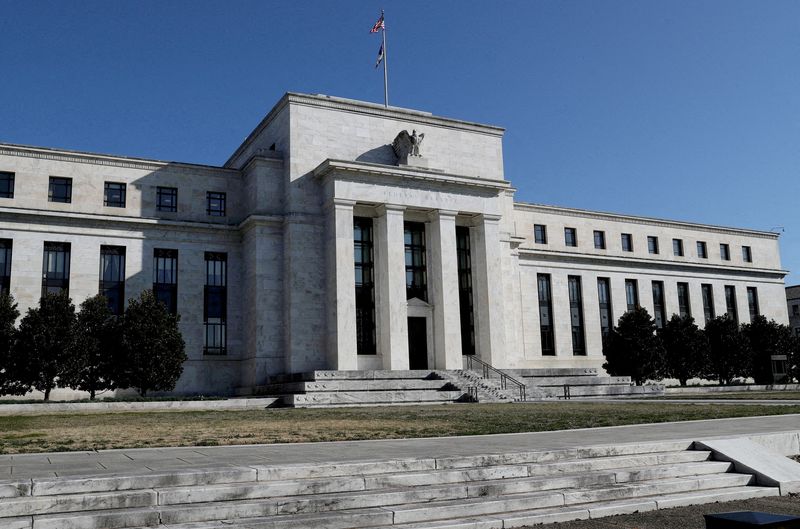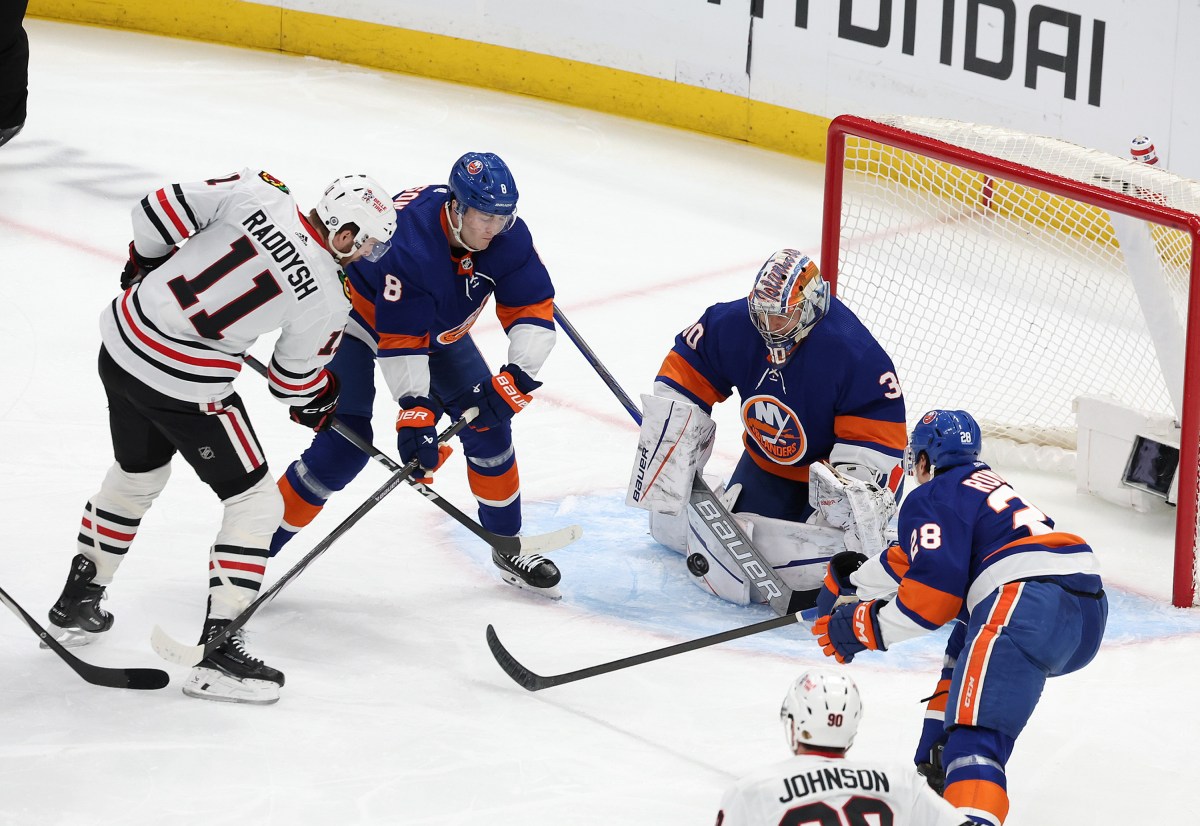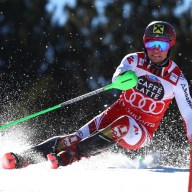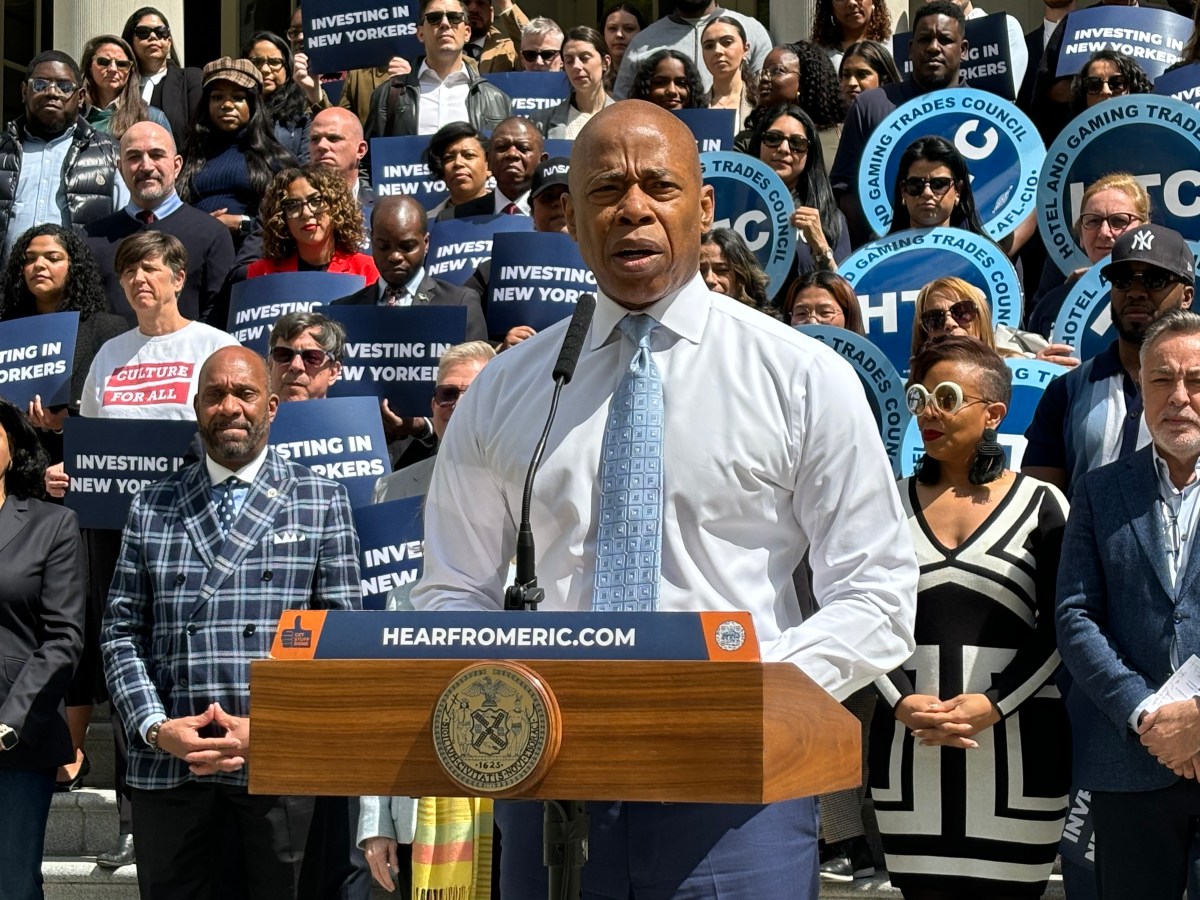NEW YORK (Reuters) -Eurodollar futures, which reflect the outlook for U.S. interest rates over the next few years, have started to price in an incremental easing of monetary policy by the Federal Reserve in 2024. If that plays out, it would be just two years after what is expected to be the start of a Fed tightening next month.
The U.S. central bank is widely anticipated to raise its policy rate at its upcoming meeting in March by a quarter of a percentage point from about zero currently. The money markets’ odds on a 50 basis point-hike the last few sessions have dwindled from as high as 80% to 37% on Friday.
Market pricing for the December 2023 eurodollar contract showed an implied yield of 2.235%, which traders said can be a proxy for the federal funds rate, the rate banks charge each other for overnight loans to meet reserves required by the U.S. central bank.
That is looking likely to be the peak of the Fed rate-hike cycle, or the so-called “terminal rate,” analysts said, with implied yields declining to 2.18% in the March 2024 contract, 2.125% in June, 2.095% for September, and 2.085% for December.
Fed officials estimate the long-term neutral rate, which is neither constricting nor stimulating economic growth, is 2.5%.
“If you look at the (yield) curve out around ’23-’24 it starts to flatten out and invert, which would argue for pricing in rate cuts,” said Jim Caron, portfolio manager and head of global macro strategies for the global fixed income team at Morgan Stanley Investment Management.
“The long end of the curve is basically telling you the same thing. It’s telling you the more they hike now, and the more they slow down growth now, the more they are going to steal it from the future, and therefore long-term growth prospects aren’t very high either.”
The roughly 220 basis points of anticipated interest rate increases over the next two years suggest a faster pace of Fed tightening that may include one or two half percentage point hikes in that period, analysts said.
Dan Belton, fixed income strategist, at BMO Capital in Chicago, pointed out that at the beginning of the month, “futures markets priced a much later peak of the Fed’s hiking cycle, closer to 2028 or 2029.”
He added that the market had also been looking for a “much shallower path of Fed hikes too, with the peak rate being closer to 1.82%” than it is now.
EURODOLLAR CURVE INVERSION
With the implied yield on the eurodollar futures’ 2024 contracts lower than those in 2023, the curve has inverted, typically an ominous sign.
Normally, yield curves slope upward with nearer maturities yielding less than dates further out in time. Longer-term debt typically carries greater risk because of the higher probability of inflation or default, demanding a greater return.
For instance, the spread between the December 2023 contract and the June 2025 contract , collapsed to around -14 basis points on Friday. A year ago, that curve was steeper and the spread was at 74 basis points.
“It’s as if traders in the eurodollar futures market think the Fed is going to overdo it next year and then have to reverse course and push rates back down,” said Brian Reynolds, chief market strategist at Reynolds Strategy, and former money market portfolio manager for an investment firm.
The eurodollar curve has inverted a few times in the past.
In June 2018, the inversion suggested the Fed would have to cut interest rates at a time when it was in a tightening mode. Indeed, after hiking rates in December 2018, policymakers reversed course the following July with a rate cut.
In 2020, the central bank cut the benchmark overnight lending rate to near zero as the coronavirus pandemic caused economic devastation around the world.
(Reporting by Gertrude Chavez-Dreyfuss; Additional reporting by Alden Bentley; Graphic by Dan Burns; Editing by Alden Bentley and Tim Ahmann)

















